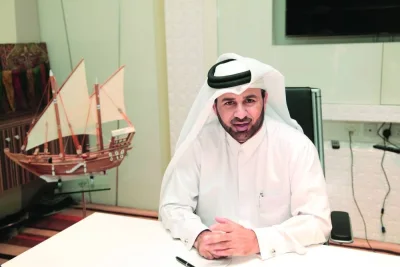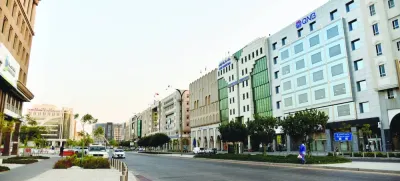The Qatar Stock Exchange Tuesday reopened after Eid holidays with a huge 139 points gain in index and more than QR7bn in capitalisation, mirroring global sentiments on the back of positive signals emanating on the US-China trade talks. An across the board buying was visible as the 20-stock Qatar Index shot up 1.31% to 10,697.1 points, recovering from an intraday low of 10,576 points. The foreign institutions were seen net buyers in the main market, which reported 1.19% gains year-to-date. About 83% of the traded constituents extended gains to investors in the main bourse, whose capitalisation added QR7.44bn or 1.19% to QR631.81bn mainly on account of mid and small cap segments. However, the local retail investors turned bearish in the main market, which saw as many as 1,500 exchange traded funds (sponsored by Doha Bank) valued at QR0.02mn trade across two deals. The Gulf institutions were increasingly net profit takers in the main bourse, whose trade turnover and volumes were on the rise. The Islamic index was seen gaining slower than the other indices of the main market, which saw no trading of treasury bills. The Arab individual investors turned bullish in the main bourse, which saw a total of 0.1mn sovereign bonds valued at QR1.04bn change hands across three transactions. The Total Return Index gained 1.31%, the All Islamic Index 1.16% and the All Share Index 1.29% in the main market. The banks and financial services sector index soared 1.88%, real estate (1.25%), consumer goods and services (0.93%), insurance (0.75%), telecom (0.68%), industrials (0.47%) and transport (0.23%). Major movers in the main market included Vodafone Qatar, Beema, Qatar Oman Investment, Commercial Bank, Baladna, Qatar Islamic Bank, Doha Bank, QIIB, Lesha Bank, Dukhan Bank, Qatari Investors Group, Mesaieed Petrochemical Holding, Qamco, Qatar Insurance, Mazaya Qatar, Ezdan and Nakilat. Nevertheless, Qatar General Insurance and Reinsurance, Milaha, Gulf International Services, Qatar Islamic Insurance and Ooredoo were among the shakers in the main bourse. In the venture market, Techno Q saw its shares depreciate in value. The foreign institutions turned net buyers to the tune of QR87.62mn compared with net profit takers of QR55.13mn last Wednesday. However, the local individuals were net sellers to the extent of QR45.68mn against net buyers of QR36.06mn on June 4. The Gulf institutions’ net selling increased substantially to QR14.75mn compared to QR1.62mn the previous trading day. The Arab retail investors turned net sellers to the tune of QR10.55mn against net buyers of QR3.09mn last Wednesday. The domestic institutions were net profit takers to the extent of QR10.18mn compared with net buyers of QR14.51mn on June 4. The foreign individual investors’ net selling strengthened noticeably to QR3.98mn against QR0.37mn the previous trading day. The Gulf retail investors turned net sellers to the tune of QR2.47mn compared with net buyers of QR3.46mn last Wednesday. The Arab institutions had no major net exposure for the second straight session. The main market saw an 11% jump in trade volumes to 234.17mn shares and less than 1% in value to QR494.59mn but on 41% contraction in deals to 24,293. In the venture market, a total of 0.1mn equities valued at QR0.28mn changed hands across 10 transactions.

Most Read Stories























